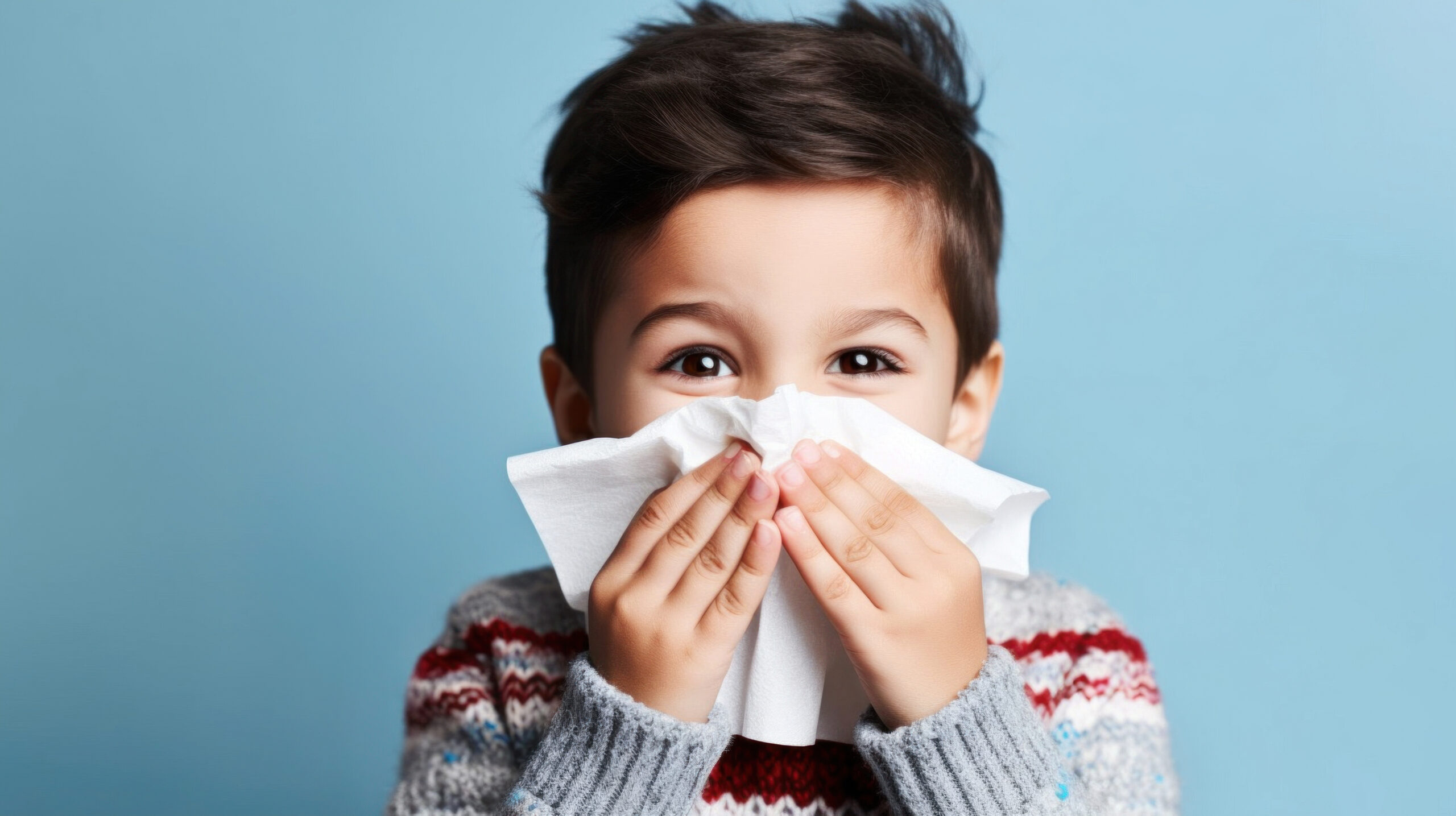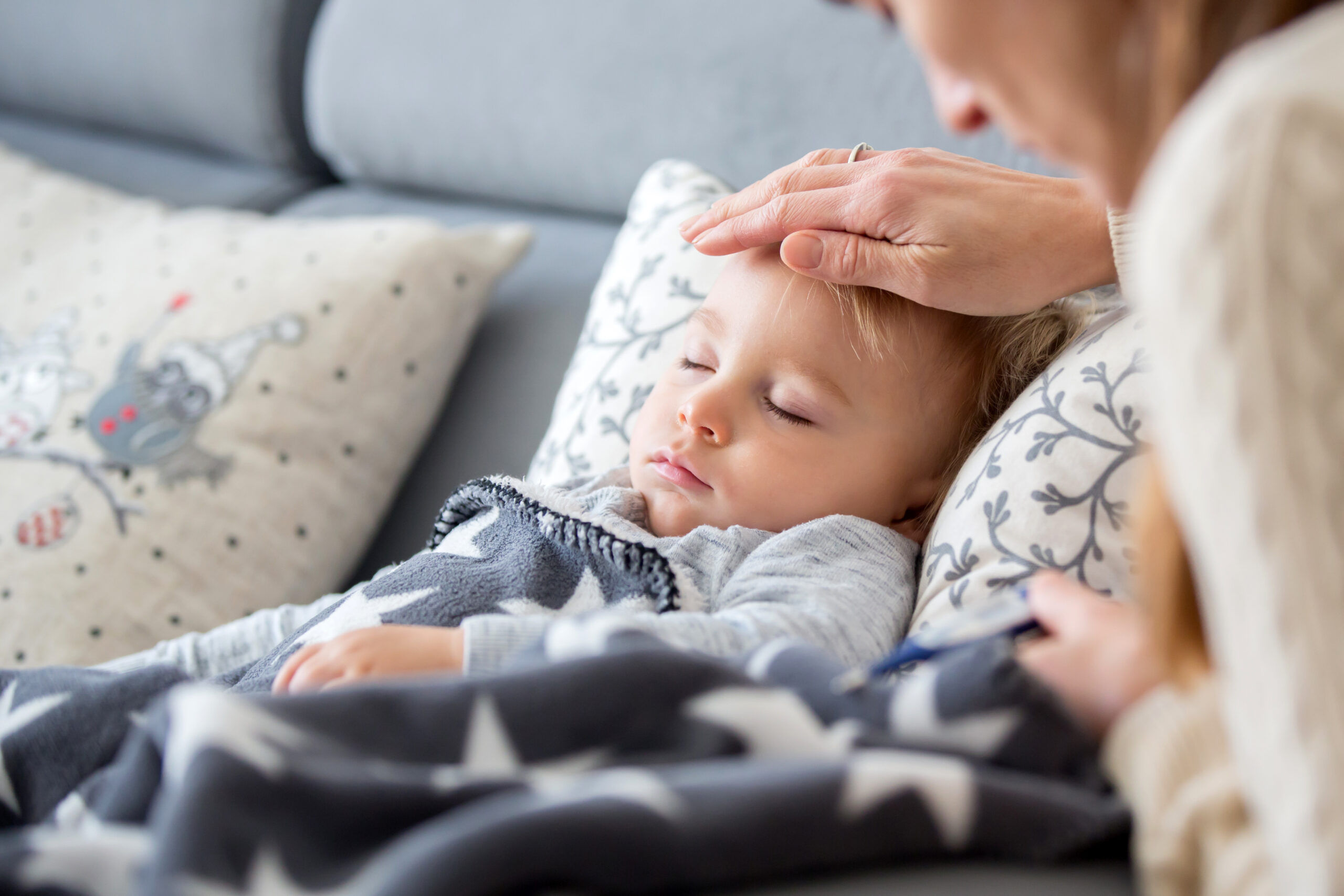
Note: the article below was written before the Covid-19 outbreak in 2020, and considers general illnesses resembling in strength, behavior, and contagiousness the flu or common cold. For recommendations pertaining to a Covid infection, please consult your physician and the policies outlined by your child’s school.
Every year, a few days after school starts, the power of the viral chain reaction kicks into full gear.
The chain reaction goes something like this:
- Once you get about 6 people to spend hours in a room together, viruses can begin to flow from one person to another.
- Let’s say in a school of about 100 children, one person with a cold infects 3 other people, then in 2-3 days those 3 infect 3 other, then those 9 infect each infect 3 others, then those 27 infect 3 others. You can see the numbers pile up rapidly. This is the chain reaction, where a small number of people can ignite large numbers of infections in a few days.
Opposing the tendency for everyone to get infected from one person are two pieces of good news:
- Many people in the building will have had that virus before and therefore cannot catch or spread it.
- Viruses, even when they land on susceptible people, usually fail, not succeed, in creating an infection, like a cold.
But even so, the power of the chain reaction is such that from a few days into August through the end of the school year in May, kids in schools get lots and lots of viral infections. Lots.
So perhaps one of the most frequent questions we get asked when your child gets sick is, “When can they go back to school?”
There are many reasons not to send your child to school when they are ill, let’s take a look at each issue:
Contagion
Contagion is a powerful word, a potent concept. Even its root meaning is powerful. If comes from the prefix, con which means “together with,” and the main word tangere, which means “to touch.” That meaning reminds me of the word tangent, which is a line that glances another surface. That is, touches it.
So contagion means touching as a result of being together with. And, it’s a great word to describe our concern that being next to someone who is sick will make us sick. When it comes to contagion, it turns out there is not much to be done.
One would think otherwise given the dominant way of thinking of contagion. And that is the notion that if your child has a fever, is clearly sick with a virus, she or he will certainly spread the illness, best to keep your child home until they feel better and that way they won’t spread the virus.
Right? No.

Here’s why:
First, the typical virus sprays out of us in our breath and on our hands for about 3 weeks after your first sneeze or diarrhea. Often you feel better in a few days or a week, and everyone goes back to school. No one stays out 3 weeks from school from a cold. That means everyone goes back to school fully contagious. You can’t avoid it. If the typical virus spreads from our child for 3 weeks after first symptom, you’d have to keep them out of school for 3 weeks, with every virus, to avoid spreading. If the usual person has 8 viral illnesses a year, that would take someone missing 24 weeks of school a year to avoid attending while contagious.
Second, even if you did this, everyone else in the school would get just as many colds! This is because viruses are in constant circulation once the chain reaction begins. By now, in November, the viral chain reaction is in full swing and will stay that way until school ends in May or June.
Keep your child out, no problem, but be mindful that keeping children out of class who have a virus has essentially no impact on other kids catching a cold. There are simply too many kids in any school at any moment circulating their own viruses.
When it comes to contagion, viruses are soaking every classroom so thoroughly, every day, that keeping your kid at home until she or he is no longer contagious is like holding your child out of the ocean for fear of getting the other children playing in it wet.
Feeling Better
Now, here is the key variable to consider when deciding when to let your child go back to school when ill: when they feel well enough to return, let them return.
That is really the whole story.
If they are feeling miserable, no point is sending them back to school.
If they feel well enough, no reason to keep them home.

Bottom Lines
- Everyone gets a viral illness. Everyone. They are crazy-common starting a few days into the school year and continue on every day through May. We are in the thick of the school virus season right now, and influenza infections haven’t really taken off yet.
- Most families, and all schools, try to set specific day limits on when a child who is ill can return to the classroom. Most of these rules relate to the concern with contagion. But if you think about contagion, it turns out everyone spreads viruses for weeks with each illness, and even if your child stays home, all the viruses circulate just as well.
- So, don’t worry about contagion, really, the only thing to consider in weighing if your child can return to school after an illness is: is he or she feeling well enough to go to school?

